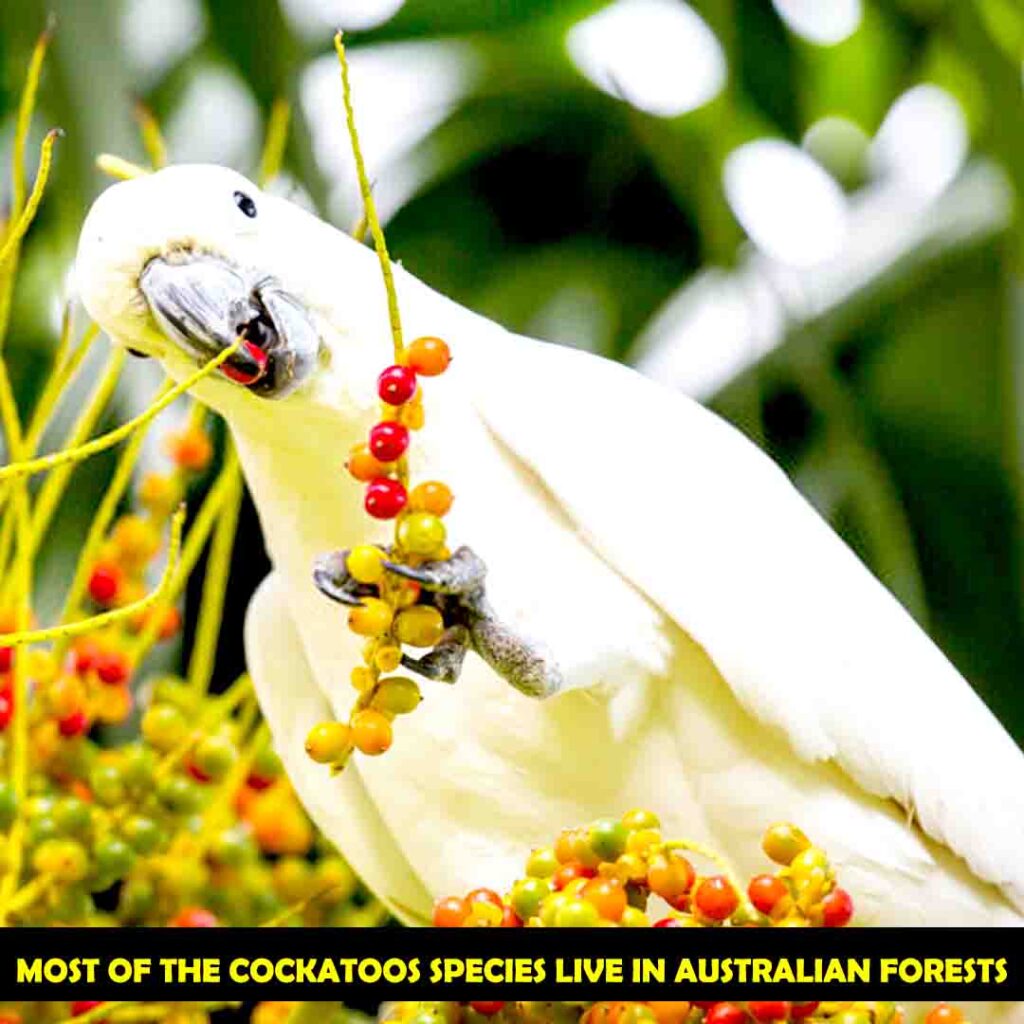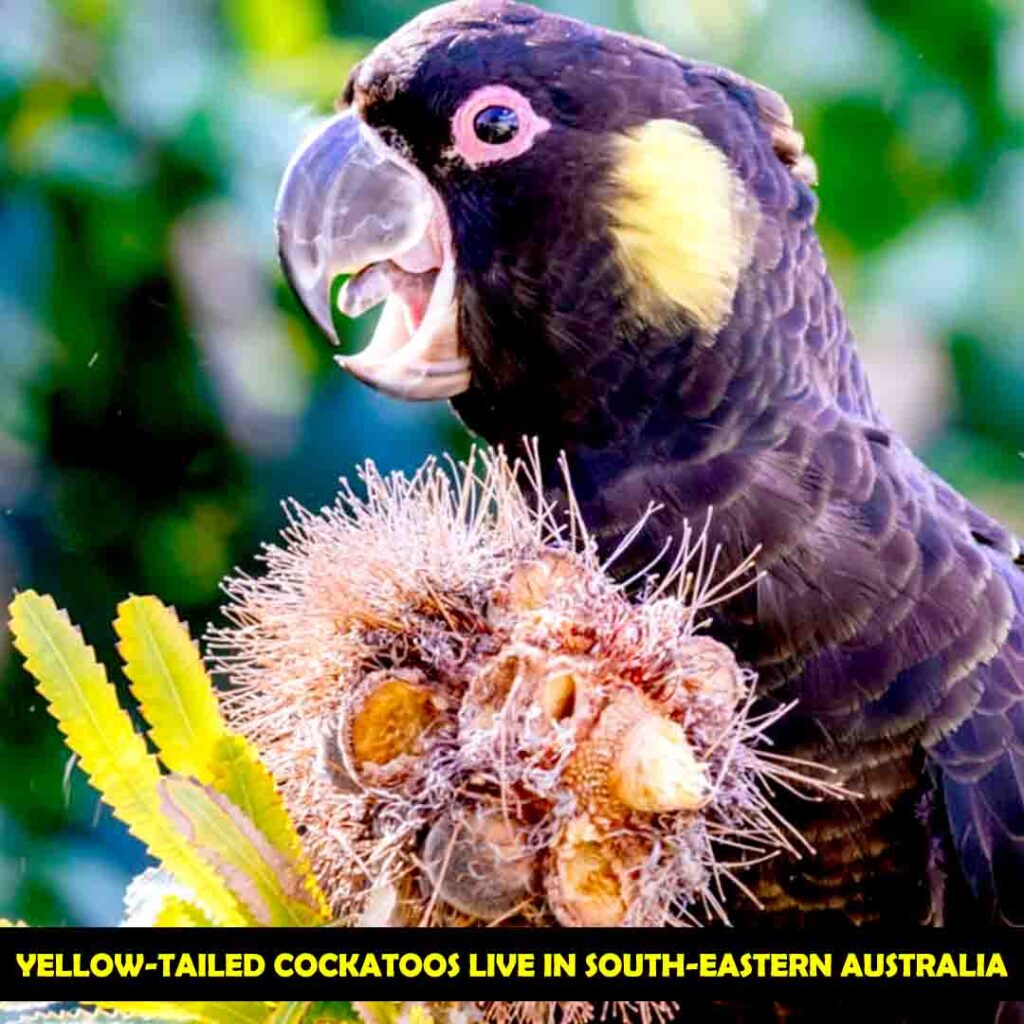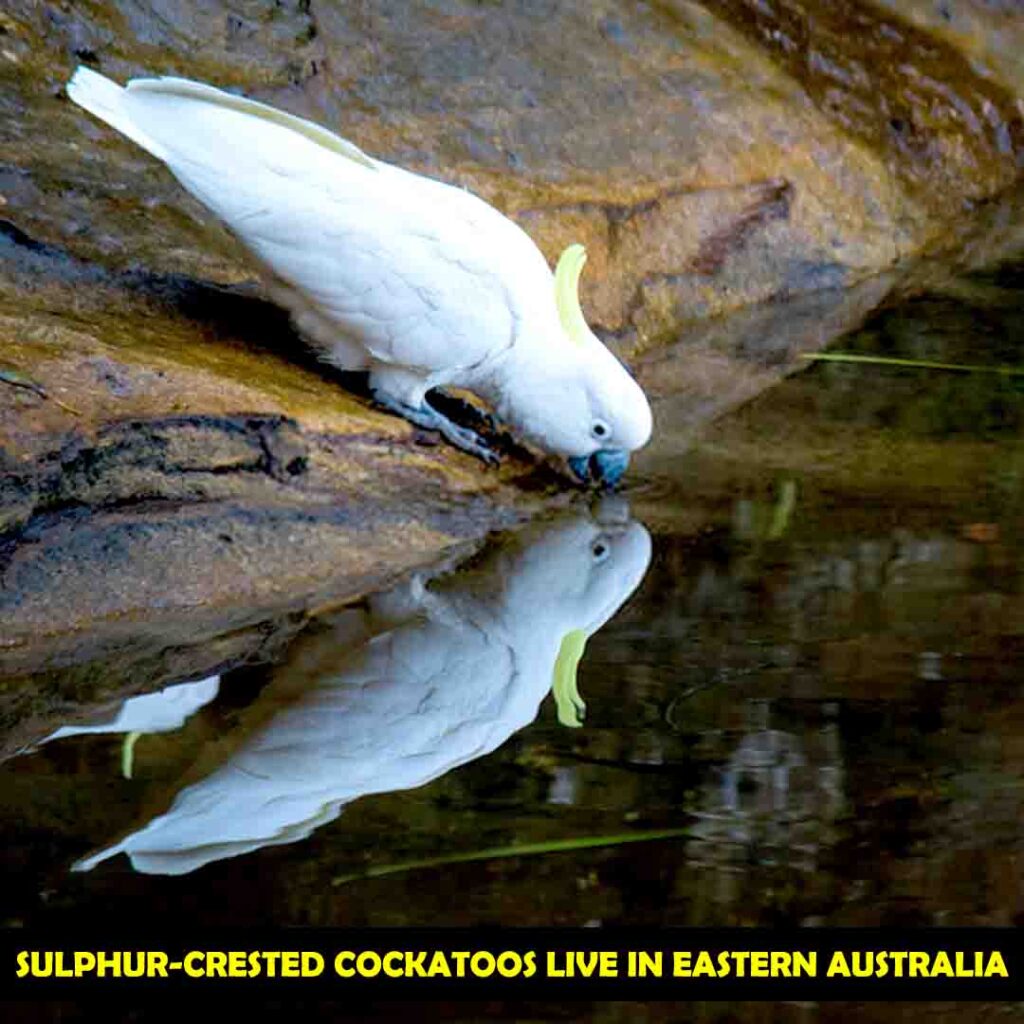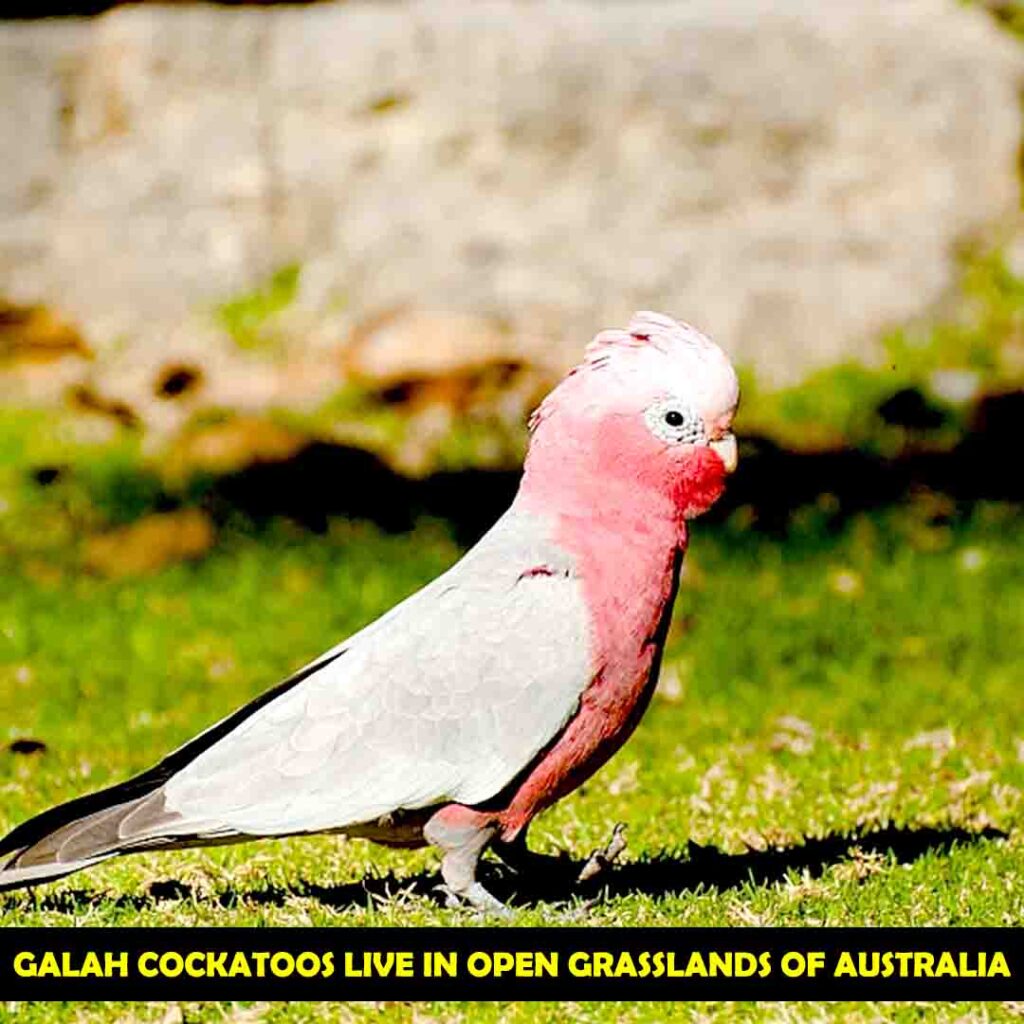Cockatoos are one of the most famous parrot species in the world, and they have comprehensive coverage of areas. These parrots are adapted to their natural habitat and live in many places. In this article, we will discuss where cockatoos live and where they survive.
Cockatoos live in many regions of Australia as well as in other countries of the world. These parrots are spread in the North and West of Australia, and they also live in New Guinea, Brazil, Indonesia, Solomon Islands, its rainforests, and the Philippines. Cockatoos can also live in Rainforests, Scrublands, Eucalyptus gove forests, Mangrove, woodlands, and open country.
There are 21 species of cockatoos, and all are spread by nature over the vast region of these countries. They live on these islands, forests, and open countries of Australia, Indonesia, Brazil, New Guinea, etc.
Cockatoos are adapted to their natural habitat, and they live there, but they can also survive in captivity if they are cared for adequately. Usually, cockatoos migrate from one region to another in order to achieve their desirable environmental conditions. Let’s discuss these points in depth.
Natural Habitat of Cockatoos:
Cockatoos are found in their natural habitat, and all species of cockatoos have their different natural habitat. Normally they are all found in the Australian region, New Guinea, some islands of Indonesia and Solomon, in the Brazilian state, and in the Philippines.
Among 21 species of cockatoos, most of the species are living in these areas, and they are adopted to their natural habitat. Some parrots can migrate to other places that seem similar to their natural habitat and favorable for their growth. Cockatoos did not breed in those areas in which they did not get favorable conditions. There are different habitats of different cockatoos. Let’s discuss their natural habitat and those places in which they can survive.

Habitat of Black Palm Cockatoos and other Places where they can survive:
Black Palm Cockatoos are different among all species of cockatoos, and their habitat is also diverse. They live in long trees and nests which are hollow from the top, and they do not care about rain or any storm; they take some precautionary measures and live in the top nests which are concave from the top.
The Natural Habitat of Black palm Cockatoos is in Northern Queensland, New Guinea, Indonesia, and many areas of Australia. They live in Forests, Eucalyptus Groves, Pine Forests, Scrublands, and rainforests of Australia, New Guinea, and Northern Queensland.
They also live in some islands of Indonesia. They are highly adapted to their natural habitat. They are not seen in other areas of any country because they are wild; they can not do well in captivity.
Habitat of Yellow Tailed Black Cockatoos:
Yellow Tailed Black Cockatoos live in south-eastern Australia, and they are native to Australia. They are found from the Eyre Peninsula (southern Australia) to the south and central-eastern Queensland. These parrots are also found on the east coast.
Yellow Tailed Black Cockatoos live in southeastern Australia, including the island of Tasmania. Bass strait, which is islands of the king, flinders, cape barren,
as well as Kangaroo Island. These cockatoos migrate to Mallee areas (Northern Peninsula), where they get a suitable and favorable environment for their breeding and living.

Yellow Tailed Black cockatoos can live in captivity; like other parrots, they are also adapted to their natural environment. But they can survive well in captivity, and they live in urban areas like Sydney, Adelaide, Canberra, and Melbourne. These parrots are not seen in any parts outside of Australia.
Habitat of Glossy Black cockatoos:
Glossy black cockatoos are found mainly in three regions of Australia. Southeast Queensland, East Victoria, and Kangaroo Island. Glossy Black-Cockatoo can be found in the area of Eastern Australia and the Kangaroo Island of South Australia.
Glossy black cockatoos are attracted to Casuarina trees in forests and open forests. So, they live there, with casuarina trees. Today, these cockatoos live and thrive in the American River and the Penneshaw. Moreover, these parrots can survive well in captivity, but there are some factors that need to be considered: their environment and food must be according to their choice and conditions. If they are cared for properly and served healthy good with monthly health checkups, they live even more than they live in the wild. Glossy Black cockatoos are adapted to their natural habitat, but they can survive in a captive environment. It has been observed that these parrots can even live more in captivity.
Habitat of Citron Crested Cockatoos:
Citron-crested cockatoos live on the Indonesian island of Sumba, and they are natives of this Island. They are forest dwellers, including evergreen, tropical forests, rainforests, forest edges, and bushes. These parrots can survive in open and lush green areas. They prefer to live in tall trees and dense green spaces close to waterways.
If you keep them at home, choose a safe place and have some fresh and green plants around you. If their cages are large, you can put small plants inside. Citron Crested cockatoos can live in captive environments but with favorable conditions. Provide them with vertical bars in the cage as they like to hang and play on the bars.
Habitat of Sulphur Crested Cockatoos:
Sulphur crested cockatoos are native to Eastern Australia and range from Kimberley to Tasmania (eastern and northern Australia). These parrots avoid living in barren areas within a few trees. They like wooden houses in the islands of Australia, New Guinea, and Indonesia.
These pets are in high demand and are prevalent in Aviculture. Sulphur crested cockatoos are also present in suburban residences and well suited to cities like Adelaide, Melbourne, Canberra, Sydney, and Brisbane. They like to live in these cities except in the mountains.
Their breeds are found in all areas of New Guinea and the nearby small islands. The islands are Waigeo, Aru, Cenderawasih Bay, Misool, and Milne Bay.
Named breeds of Sulphur Crested Cockatoo have been introduced in Perth, Australia, and are of high quality. People from outside Australia are from Singapore. 500 to 2000 sulphur crested cockatoos have been introduced in Singapore and Palau, and New Zealand.
Their population in New Zealand is less than 1,000 parrots. Sulphur crusted is a subspecies of cockatoo, and these subspecies are also found in Hawaii and the various islands of Valencia (Kai Island and Ambon). They can also be found in the tropical and subtropical rainforests of Australia and Indonesia.

They are also found in their native trees, such as Macadamia (Macadamia tetraphylla). They like to live on their favorite tree and its seeds and nuts. That tree is a yellow box (Eucalyptus melliodora).
Sulphur Crested cockatoos can live well in captivity, and they can survive very well as a pet. These parrots are excellent pets, and their lifespan also increases in detention if they are cared for properly with health checkups and by providing a favorable environment to them.
Habitat of Triton Cockatoos:
They are from New Guinea and the surrounding islands. They usually live on islands and forests; The islands around New Guinea in which they live are the western Papuan Islands, Luziad, and De Anticristo. These parrots love green areas and woodlands.
They prefer dense forests in the hills. These hills are most commonly found in the lower and middle elevations. They are found in areas where there are tall trees with fruits, vegetables, and waterways, and they live close to their natural habitat.
Triton cockatoos are also found on most of the islands in the western part of the Solomon Sea, except for Arrow Island (native to Greater Sulphur Cockatoo). They are often seen flying in small groups and eating in large groups on the ground.
Triton Cockatoos can live in captivity as well; they are also gentle nature parrots. They can survive in an Urban captive environment.
Habitat of Greater Sulphur Crested Cockatoos:
The Greater Sulphur Crested (Cacatua Galerita) is a native of Australia (from Cape York to Tasmania). They have a wide range of residences. They are the least concerned species and can be easily found in many parts of Australia. They live in dense forests and jungles.
They live in Tasmania, Victoria, New South Wales, to the north (Queensland). They are also found in Western Australia, from the Northern Territory to the Kimberley area. They are found primarily on the islands, forests, and jungles of Australia.
To save the population of these beautiful parrots, there are many conservation programs. Their breeds have been introduced in Indonesia (Palu Island), Perth, New Zealand, etc. Efforts are being made to maintain their growth rate and save these generations from decline.
They can do great work even in captivity, and they have adapted well to urban settlements. These parrots are cute pets, and they need a big cage to live in. They like to be with their owners and loved ones.
Habitat of Yellow Crested Cockatoos:
Yellow Crested Cockatoos are found mainly in the timber and cultivated areas of East Timor. These parrots really love forests and plants, and they are also found on the Indonesian island of Sunda. They like forests adjacent to green fields, wheat fields, and meadows.
Their population has recently been introduced to Hong Kong. They can be seen in Hong Kong’s public parks. Their population is also seen in the national parks of Sulawesi. Biologists are working hard to protect them, and their populations have been introduced to Komodo National Park and the island.
There are many islands and national parks in Indonesia, Sulawesi, Abadi, and East Timor, where they are doing their best. Biologists are trying hard to protect these parrots because they are known as critically endangered species, according to IUCN.
Yellow Crested Cockatoos can survive well in captivity as a pet if they are treated well. These graceful parrots need good food and a healthy environment in which they can live, and if it is provided to them, they can survive there.
Habitat of Medium Sulphur Crested Cockatoos:
Medium sulphur crested cockatoos are also known as Eleonora Cockatoos. They belong to the Island of Aru in the province of Malaku. This province is in eastern Indonesia, and they go to places where they find a suitable environment.
They like the green vegetation area and the water forests with waterways.
They are also found in woodland forests and semi-arid forests. They like greenery and trees because they get food from them. These parrots are also found in grasslands, bushes, and forests.
Their species have been introduced to the Kai Islands, and biologists preserve them for conservation. These parrots are being properly cared for here. Medium sulphur cockatoos are excellent pets, and they can survive well in a captive environment.
These parrots need love, care, and attention daily. If they served healthy food with some exercise and monthly health checkups, they could survive even more than their actual age.
Habitat Of Galah cockatoos:
Galah Cockatoos are also known as Rose-Breasted cockatoos. They are native to Australia, and they are adapted to natural habitats. Galah cockatoos live in the Open grasslands of Australia, and they are found throughout the whole of Australia except one place named the Cape York peninsula.

These cockatoos are also found in Near Cultivated crops because they eat there and also live where livestock watering is near. Like every parrot species, they also like favorable conditions to be seen near the crops and watercourses. These parrots have established themselves in Tasmania; they migrated to this area and established themselves here. Galah Cockatoos are also found in Metropolitan areas like Adelaide, Perth, Melbourne, etc. These parrots can survive very well in captivity. In the wild, they faced many challenges, and the major challenge they faced was habitat loss. So they live perfectly in captivity because, in the wild, they have lost their habitat so they can survive in captivity with proper care and attention.
Conclusion:
All species of cockatoos are spread over vast areas throughout the world. They are very famous, and they live in most areas of Australia, the Indonesian Islands, and the other regions of Australia. Some cockatoos also migrate from their natural habitat to some other favorable place.

